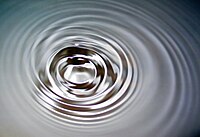Wave propagation

Wave propagation is like when you throw a ball into a pool of water and it creates ripples. These ripples travel through the water until they hit the side of the pool or something else in their way.
In the same way, waves can be created by things like earthquakes, sound, or light. These waves move through a material or space, like air or water, and they can be reflected, refracted, or absorbed by objects in their path.
Different waves have different properties, like wavelength and frequency. If you imagine a wave as a rollercoaster, the wavelength would be the distance between the peaks or valleys, and the frequency would be how many peaks or valleys go by in a given time.
Understanding how waves propagate can help us predict things like earthquakes and weather patterns, and improve our communication and transportation systems.
In the same way, waves can be created by things like earthquakes, sound, or light. These waves move through a material or space, like air or water, and they can be reflected, refracted, or absorbed by objects in their path.
Different waves have different properties, like wavelength and frequency. If you imagine a wave as a rollercoaster, the wavelength would be the distance between the peaks or valleys, and the frequency would be how many peaks or valleys go by in a given time.
Understanding how waves propagate can help us predict things like earthquakes and weather patterns, and improve our communication and transportation systems.
Related topics others have asked about:
